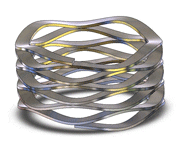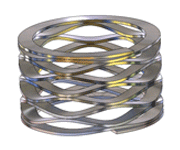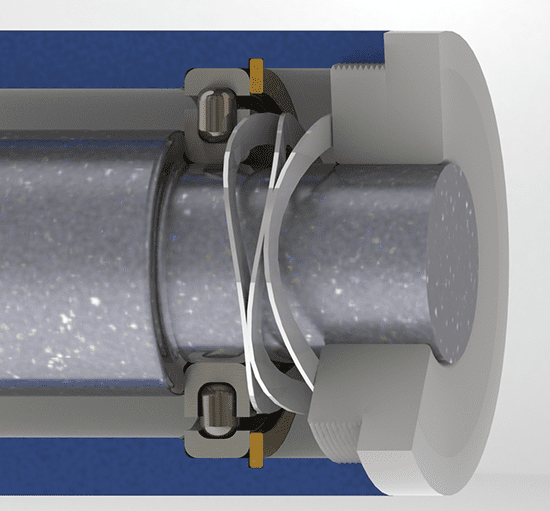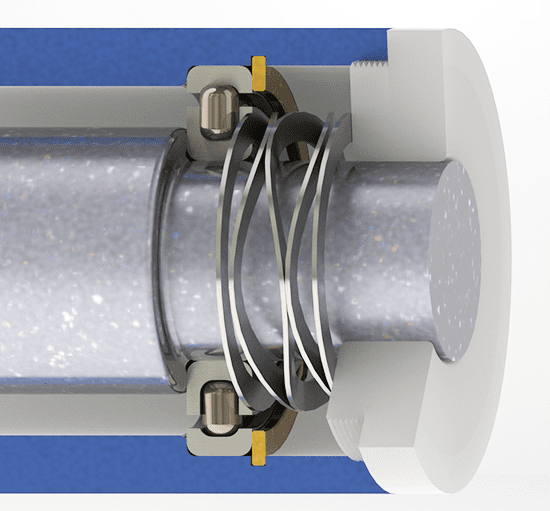Wave Springs: Waved Ends Or Shim Ended?

 |
|
|
Wave Springs: Waved Ends or Shim Ended? |
|
 |
 |
| Multi Turn Wave Spring with Waved Ends | Multi Turn Wave Spring with Shim Ends |
|
A manufacturer of dry running and oil flooded rotary-screw compressors began utilizing spiral wound flat wire multiple turn wave springs with waved ends, over conventional round wire coil springs. The propeller shafts of the screw compressors are guided by bearings, which are pre-loaded by the wave springs. The wave springs are able to provide an almost constant load while balancing axial assembly tolerances in the application. The conventional coil springs required too much axial space and disc spring stacks were too complicated to handle on the assembly line. |
|
 |
|
| Wave Spring with waved ends preloads bearing in compressor application. | |
|
However, an issue occurred in the original wave spring design. The spring was too low of a load causing the bearings to be moved in the application, creating vibration, noise and decreasing the life span of the bearing. Furthermore, the axial movement of the bearing causes the sealing elements in front of the bearing to become lose so that air and oil leakage occurred. To remedy this, higher load multiple turn wave springs, crest-to-trough, with waved ends were utilized in the application. However, the wave ends of the wave spring created an added issue. When assemblymen attempted to close the cover element of the compressor housing, the first/last turn of the wave spring moved out of position. Therefore, the housing would not be sealed correctly and air/leakage could occur and damage to bearing could also result. |
|
 |
|
| Wave Spring with shim ends provides a flat contact surface for cover element and bearing. | |
|
The final design, flat ended or shim ended multiple turn wave springs, resolved the problems in the assembly line. The assemblyman was able to close the cover element of the housing because the spring was parallel to the surface of the housing. Furthermore, permanent contact between the flat ended wave spring, cover element and bearing created enough friction which prevented radial movement of the first/last turn of the wave spring. As this application case has shown, wave springs can be designed to certain tolerances and sizes with shim ends or waved ends depending on the customer’s application requirements. |
|
More than Parts. A True Partnership.
Our passion is creating the best rings, springs, and clamps. Our mission is to make your work a success. We are here for you.
